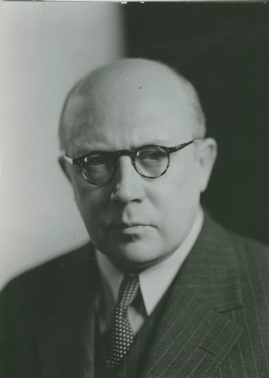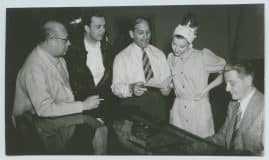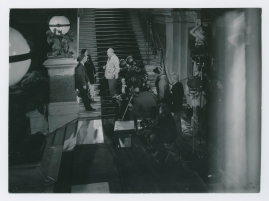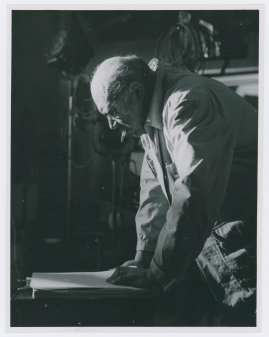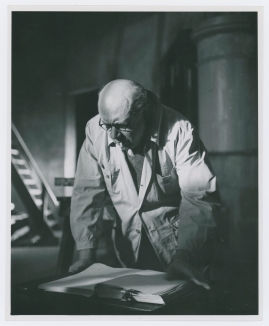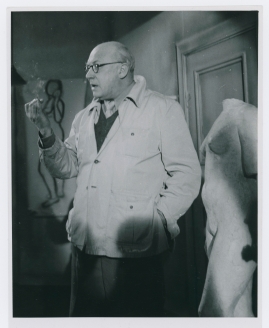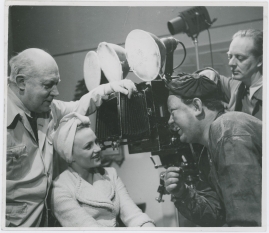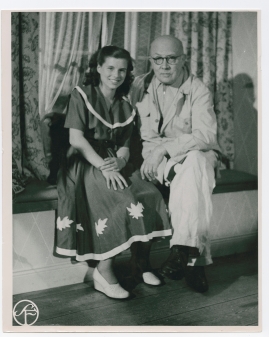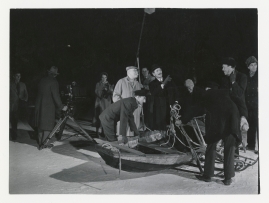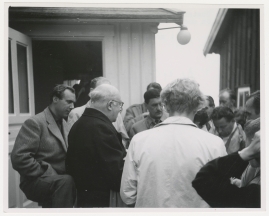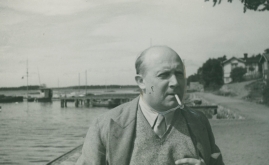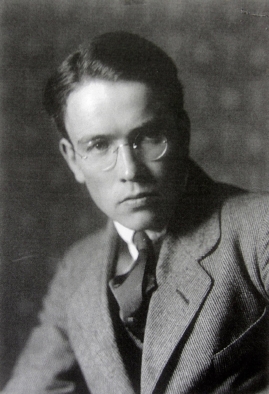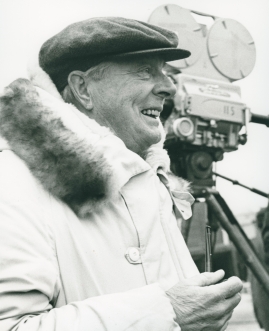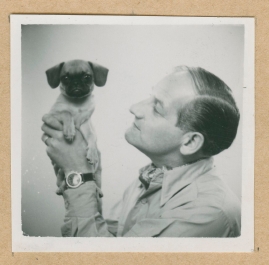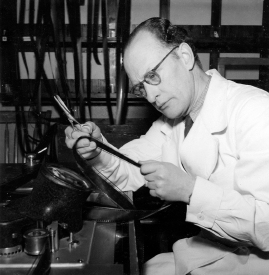Gustaf Molander
Table of contents
- Basic facts
- Links and resources
- Biography
- Awards
- Films
- Original work
- Soundtrack listing
- Groups
Basic facts
Media (11)
| Alternative names |
|
|---|---|
| Director |
|
| Screenplay |
|
| Show all films | |
| Awards |
|
Biography
Swedish director, scriptwriter and actor. Born as Gustaf Harald August Molander in Helsinki (Imperial Russia). Died in Stockholm. Married to the actress Karin Edwertz. Brother of the director Olof Molander.-Is there a Swedish film director with such a long and consistent career as Gustaf Molander? He was part of the scene during the first "Golden Age" of Swedish cinema between 1913 and 1924. During the 1930s he was one of only a handful of quality-conscious filmmakers. He was active during the renaissance of Swedish cinema in the 1940s, and was one of the few...
Links and resources
Biography
Swedish director, scriptwriter and actor. Born as Gustaf Harald August Molander in Helsinki (Imperial Russia). Died in Stockholm. Married to the actress Karin Edwertz. Brother of the director Olof Molander.
-
Is there a Swedish film director with such a long and consistent career as Gustaf Molander? He was part of the scene during the first "Golden Age" of Swedish cinema between 1913 and 1924. During the 1930s he was one of only a handful of quality-conscious filmmakers. He was active during the renaissance of Swedish cinema in the 1940s, and was one of the few who made anti-Nazi films during the Second World War. He made accomplished dramas in the 1950s, in many ways coming full circle by making new versions of some of the classics of the silent film era. In addition to directing and writing screenplays, he also edited scripts for other writers and was at one time Artistic Director at Svensk Filmindustri. With such a pedigree, it feels quite natural to call Gustaf Molander the "grand old man" of Swedish cinema.
Molander made both comedies and dramas, almost always with a culturally refined and sophisticated tone. This makes him stand out in the 1930s, when lowbrow farces and mass-appeal comedies were otherwise in fashion. At times he was more experimental, as in One Night (En natt, 1931), a fiery, expressionist drama played out on the Finnish-Russian border where the revolution comes between a young man and his family and fiancée. Despite his middle class image, Molander nonetheless made a number of indignant political films.
His most highly acclaimed work is Intermezzo (1936), a film he made largely after his own instincts, and thus perhaps one which is more typical of his filmmaking than En natt. A well-acted, passionate and civilised film about love between a violin virtuoso, played by Gösta Ekman senior, and his much younger piano accompanist, played by Ingrid Bergman, this was the film which ultimately propelled Bergman to Hollywood, where she reprised the role opposite Leslie Howard in Intermezzo: A Love Story (Gregory Ratofff, 1939). Bergman and Molander made six films together, all of which rank among his best.
Molander's principal collaborator was however the cinematographer Åke Dahlqvist. The two men constantly worked together, to the extent that we should perhaps not only speak of Molander but of "Molander & Dahlqvist". They worked together from the 1920s right up until Sången om den eldröda blomman ('The Song of the Fire-Red Flower', 1956). Together they elaborated what was sometimes an advanced pictorial art form; a pictorial language rich in meaning, full of shadows and dark corners, even in the comedies. In many of the films the pictorial language helps to create a film which rises above the banalities of the script. Molander was also a fine coach of those he directed, enabling in particular strong female characters in his films.
It is impossible to bypass Molander in any overview of Swedish film. He is one of the most significant figures, not simply because of his long career, but also because of his gravitas, his contacts and his strong position in Swedish film life. In recent years his films have begun to attract favourable research from a feminist viewpoint, but in terms of research in general, Molander remains relatively unexplored. There is definitely material for several PhD theses here.
Fredrik Gustafsson (2011)
(translated by Derek Jones)
Awards
| Swedish Film Society Prize | Stockholm | 1953 | (hedersdiplom) | ||
|---|---|---|---|---|---|
| Stockholm | 1935 | (plakett) | |||
| Prize | (Svenska filmklubbens Filmpionjärernas minnesmedalj) |
Films
Groups
| Tre herrar vid en grogg (Författarkollektiv.) |
